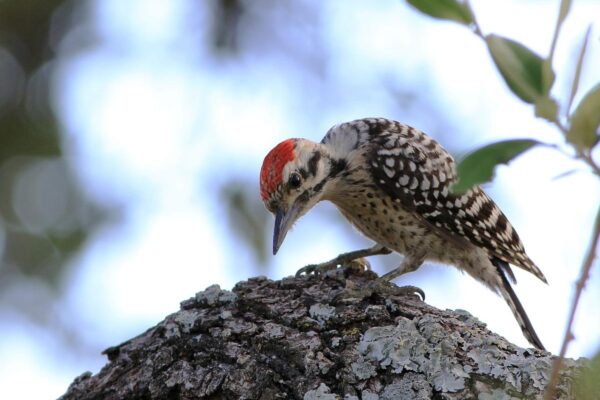Humans have shared their existence with chickens for over 5,000 years. Chickens have their origins in the Red Junglefowl, a timid bird found mainly in Southeastern Asia, but they have undergone significant changes through human domestication.
In fact, chickens outnumber all other bird species globally. So, what do you call a group of chickens?
The most commonly used collective nouns for a group of chickens are a “peep of chickens,” a “flock of chickens,” and a “brood of chickens.” “Flock” is a general term for groups of most birds, while “brood” typically refers to a family unit of chickens. “Peep of chickens” is often used for younger chickens that emit a soft chirping sound, resembling a peep, although the exact origin of this term remains a mystery.
Despite the commonality of chickens in our lives, their history is rich, intricate, and still the subject of debate. Domesticated chickens are usually found in relatively large flocks, similar to their wild ancestor, the Red junglefowl. Like the Red Junglefowl and many other closely related birds, chickens maintain intricate social systems and hierarchies.
If you’re interested in learning more collective nouns for chickens and other fascinating facts about these globally recognized birds, keep reading!
Do chickens gather in groups?
Chickens are social and friendly birds that prefer living in groups of three or more hens, typically with one rooster for every 5 to 15 hens if the owner wants them to reproduce.
When kept alone or with just one other chicken, chickens can become anxious and unhappy. Most breeds of domesticated chickens also have communal breeding practices, meaning hens often sit on each other’s eggs and share the responsibilities of raising young chicks.
In the wild, there are feral chicken groups—chickens that have escaped domestication and formed new communities. These feral chickens also gather in flocks, usually consisting of several birds.
Why do chickens gather in flocks?
Understanding the reasons behind chicken behavior can be quite challenging, especially when comparing them to their ancestors like the Red Junglefowl. Chickens have been significantly influenced by human breeding, and their flocking behaviors have likely evolved alongside domestication.
What we do know is that much of chickens’ social and gregarious behavior is linked to the reproduction process. Roosters regulate the breeding rate of hens, aiming to produce offspring. By forming flocks with a strong reproductive hierarchy, chickens can maintain high birth rates.
Flocking also helps chickens stay warm in cold weather by huddling together and provides safety in numbers when facing predators. Chickens gather in groups both for survival and due to their natural social instincts.
Social Structure in Chicken Communities
Chickens develop strong social bonds with each other, but their social system isn’t always fair and equal. For example, in a group of hens without a rooster, a pecking order is established with a dominant hen at the top, followed by several tiers of hens beneath her.
This hierarchy dictates which chickens get priority for food, nesting spots, water access, and dust baths. Generally, these hierarchies among hens don’t result in bullying or aggression towards those lower in the order, and they often form strong friendship bonds.
When a rooster is part of the flock, around 10 to 15 hens will be subordinate to him, and he will mate with all of them. If there are multiple roosters, they may choose which hens to mate with, but the hens also have some say in this matter.
When outsiders try to join a chicken flock, they may face bullying or attacks from the established members.
Junglefowl, which chickens are descended from, also maintain complex social hierarchies among both males and females, and they often engage in monogamous pairing.
When do chickens gather in groups?
Determining what constitutes a chicken “flock” can vary depending on the context. Large commercial farms with thousands of chickens may not truly be considered flocks, as these chickens often can’t express their natural social behaviors.
In the case of smaller groups of chickens kept for recreational or semi-commercial purposes, chickens naturally form social flocks when there are enough birds to do so. Essentially, when their environment allows it, chickens instinctively create flocks. Feral chickens that have established themselves in the wild also form flocks with social hierarchies, known as “pecking orders.”
How many chickens are in a flock?

For most breeds of domesticated chickens, a flock typically consists of no fewer than three birds. A typical small flock may have 6 to 10 birds. Large industrial poultry farms can house thousands of chickens, but they are not usually considered flocks in the same sense.
Do chicken families stay together?
Small to medium-sized chicken broods or flocks usually form strong social bonds and remain together. They often roost together at night and share warmth if needed. When it comes to raising chickens, hens frequently share responsibilities like incubating, brooding, and rearing chicks.
As long as chickens are raised and socialized together, the social hierarchy usually maintains itself without causing harm or conflicts. The exception is when two or more flocks or broods are introduced to each other, which can lead to tensions.
Baby chickens often stay close to their mothers for 4 to 8 weeks. They grow rapidly and typically reach sexual maturity within 4 to 6 months, at which point they begin breeding and laying eggs.
What is a flock of roosters called?
There isn’t a specific name for a group of roosters. Roosters tend to be more aggressive than hens and may fight each other if there are not enough hens in the flock for mating. Many poultry experts recommend having one rooster for every 10 to 15 hens to prevent excessive competition. The suitability of this ratio can vary between chicken breeds, as some roosters are more docile than others.
Roosters may coexist in each other’s company, and in the case of Red junglefowl, they sometimes form their own small flocks away from the female hens.
What is a pair of chickens called?
There isn’t a specific name for a pair of chickens. Chickens generally prefer to live in larger groups, ideally consisting of more than five birds per flock.
Chickens in smaller groups can become bored, anxious, or even depressed. Some more docile breeds might tolerate smaller groups better, but they still benefit from social interactions with both other chickens and humans.
What is a group of baby chickens called?
A group of baby chickens is most commonly referred to as a “brood.” Another common term is a “peep of chickens,” which could be associated with the way baby chickens “peep” out of their eggs or the soft squeaking sounds they make as chicks.
Are chickens aggressive?
The level of aggression in chickens can vary widely depending on their breed. Some breeds like Silkies, Plymouth Rocks, Golden Buffs, and Sussex are known for being calm, friendly, and docile.
On the other hand, certain breeds, both male and female chickens, can display high levels of aggression, with males often being responsible for the most intense forms of aggression. In some cases, competing males from aggressive breeds can fight to the death. Some breeds have been specifically bred for cockfighting, a practice where these aggressive tendencies are encouraged. However, aggression levels can also depend on the individual bird’s personality.
Key Chicken Terms
There are several important terms related to chickens:
Cockerel:
A young male domesticated chicken under 1 year old, typically maturing sexually at around 4 to 5 months.
Cock:
An adult male chicken. The term “cock” is used for adult males of various fowl species raised for game, meat, or eggs.
Pullet:
A young female chicken or hen, usually under 1 year old.
Juvenile:
A juvenile chicken is a young bird that has not yet developed its full adult plumage or reached sexual maturity. Chickens usually enter the juvenile stage between 4 to 16 weeks, depending on the breed, and reach sexual maturity another 4 to 16 weeks later.
Rooster:
Roosters are adult male chickens, synonymous with “cock.”
Hen:
Hens are female chickens that have reached sexual maturity, typically between 16 to 24 weeks. The term may also refer to a female chicken older than 1 year.
Chook:
Slang for a female chicken, particularly in Australia.
Bantam:
Bantams are the smallest breeds among domesticated birds, including ducks.
Layer Breed:
These breeds are primarily raised for egg-laying, such as the White Leghorn, known for laying around 250 to 300 eggs annually.
Hybrid:
Hybrid birds result from mating different species or varieties. In the case of chickens, hybrids are created through crossbreeding, which can occur naturally when different breeds are mixed.
Poultry:
The general term for birds that have been domesticated for human purposes, is primarily for producing eggs, meat, and feathers.
Are chickens social?
Chickens are naturally social and gregarious animals, often forming close-knit groups that provide protection and support.
Hens frequently collaborate on tasks like nest-making, incubating eggs, and raising chicks. Occasionally, two hens may even share the same nest, leading to a unique sight where one sits on top of the other. While some hens prefer solitude during nesting, most chickens are social and cooperate.
Roosters, however, tend to be less social than hens. They prioritize themselves when it comes to feeding, signaling to the flock when it’s their turn to eat.
Do chickens get lonely?
Chickens are flock animals and typically require social interaction with other chickens. Without companionship, chickens can become bored, anxious, and even depressed. Loneliness can lead to destructive behaviors, including self-harm.
Roosters may adapt better to solitude compared to hens, but only if they were raised that way. Hens raised alongside other pets or children may also be content as long as they have opportunities to socialize beyond their chicken counterparts.
Are Red Junglefowl social?
Red junglefowl, the ancestors of modern-day chickens, exhibit similar social hierarchies to chickens kept in natural environments. They may live with multiple females in a group, although they can also live alone or with other males. Among these birds, hens tend to be the more social and gregarious gender. Roosters establish hierarchies when present, and in their absence, dominant hens may lead the flock.






One thought on “What is a Group of Chickens Called?”